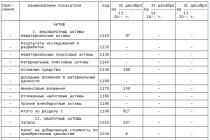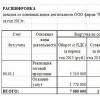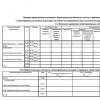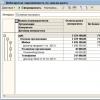Detailed regulation of labor relations for enterprises, companies and commercial structures that use hired labor is mandatory in accordance with the current legislation in this branch of law. The internal labor regulations are a regulatory document of internal corporate significance, which can be downloaded for free from the link.
Features of the development of internal labor regulations for LLC
The PVTR reflects information on the following mandatory aspects of the relationship:
- registration of an employee in the company and termination of labor relations;
- mode of work and rest;
- order for employees.
In practice, employers also include other sections related primarily to the mechanisms of remuneration, bonuses and bonus deductions for personnel, etc. However, issues related to remuneration are often reviewed.
If they are included in the internal labor regulations, then the introduction of any changes and amendments without the consent of the trade union organization will become impossible. And this is not always appropriate or convenient for the leader. Structure of the PWTR presented in three parts:
- general;
- main;
- final.
Internal labor regulations are traditionally developed in the personnel or legal department, but often the owner of the business or the head of the enterprise personally deals with this issue. In addition to the requirements for the content (more on them below), the design requirements regulated by GOST 6.30-2003 are also applicable to this local act. Therefore, on the title page of the PVTR contains the following information:
- information about the company (according to the constituent documents);
- date and place of sighting of the act;
- information about the leader;
- signature of the leading person;
- institution seal.
The content of the Internal Labor Regulations

The PVTR includes three sections: introduction, main part and conclusion, but the leader has the right to provide for a different principle of division, highlighting smaller sections, chapters, paragraphs and paragraphs. The main document on which to rely when developing this internal local act,. Since the rights and obligations of employees declared in it cannot be fulfilled or worsened by local regulatory documents.
Introduction
Traditionally, it reflects the general points related to the purpose and objectives of the PWTR, the conditions for the implementation of labor activities in the company, the rights and obligations of employees, information on remuneration in terms of determining the frequency of payments, and the dismissal of personnel.
Main part
The main part of the PWTR is devoted to the algorithm for calculating working time, information about the procedure for rationing labor, and accounting for rest time. In the latter case, information on vacations, temporary disability, weekends and holidays is prescribed in detail; for shift work, inter-shift intervals are indicated, etc. If the enterprise has a delivery of employees to the place of implementation of the labor function, then this should be mentioned in this section.
Final part
 The Internal Regulations are completed with a section on disciplinary measures applied to employees for failure to comply with the above regulations. Information about the collegial bodies for consideration of disagreements and regulation existing at the enterprise will also be relevant here. If the company provides benefits for the strict implementation of the Internal Regulations for certain categories of personnel, for example, with health restrictions, mothers with children, etc., then this information is prescribed here.
The Internal Regulations are completed with a section on disciplinary measures applied to employees for failure to comply with the above regulations. Information about the collegial bodies for consideration of disagreements and regulation existing at the enterprise will also be relevant here. If the company provides benefits for the strict implementation of the Internal Regulations for certain categories of personnel, for example, with health restrictions, mothers with children, etc., then this information is prescribed here.
The PWTR, due to their vastness, is difficult to present in the form of a short list of main sections, paragraphs and subparagraphs. Therefore, we recommend that you familiarize yourself with the sample of the Internal Labor Regulations for LLC 2016 at this link below.














